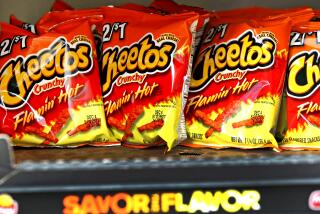One gizmo’s wide-roaming social impact
- Share via
Cellphones imagined
1930-1972
Innovation: Car phones exist but, because they’re hitched to one central tower with a limited number of channels, they have only specialized uses. In 1947, however, researchers figure out that by dividing a city into cells, each with a tower, the same frequency can be reused by millions of callers simultaneously across the city.
Impact: No real social effect because cellphones remain unavailable to the public, but the technology does change the fantasy realm, as Dick Tracy uses a wristwatch phone to nail such villains as Gargles and Littleface Finney, and Maxwell Smart employs a shoe phone to battle KAOS evildoers.
The first cellphones
1973-1982
Innovation: In 1968, the Federal Communications Commission sets aside frequencies.
Impact: Telecommunications corporations -- AT&T;, Bell Labs, Motorola -- race to produce a cellular system and cellphone. Society, meanwhile, continues to founder as husbands seek out phone booths from which to ask wives what they were supposed to bring home for dinner.
The luggable ‘80s
1983-1990
Innovation: All hail DynaTac, Motorola’s nearly 3-pound, $4,000 phone that requires 10 hours of recharging for every 35 minutes of use. By decade’s end, cellphones weigh a pound and a quarter and cost $2,000.
Impact: Hospital workers are the first converts. Movies such as “Wall Street” (1987) make the cellphone a symbol of wealth. Realtors and drug dealers become addicted. But wireless communication threatens social disconnect. “People are able to be physically present but psychologically absent,” says James Katz of Rutgers University.
The cellphone age
1990-today
Innovation: Cellphone use skyrockets from an estimated 350,000 in the mid-1980s to 181 million U.S. users today.
Impact: Cellphones help people “micro-coordinate” their lives, researchers say. New York, New Jersey, Washington, D. C., and Chicago ban talking on cellphones while driving. Cellphone alerts spark the onboard revolt on Flight 98 on 9/11; terrorists use them to detonate bombs in Iraq, Madrid, and probably London.
-- Laurie Kaye






